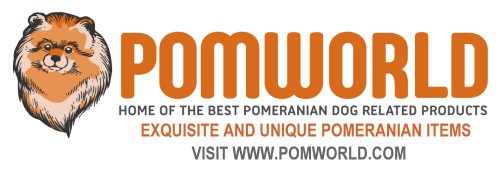Last Updated on 25/04/2024 by Dochlaggie. Post first published on May 12, 2022.
Sable Pomeranians are a recognized color pattern variation of the Pomeranian breed. The sable coat color pattern is one of the most popular and recognizable dog color patterns.
Sable is a term used to describe the black banding on the Pomeranian’s guard hairs, which gives the coat an appearance of being dark shaded or sable in color.
Read on to learn everything you need to know about these attractive sable Pomeranian dogs.
What is a Sable Pomeranian?
Sable Pomeranians have a coat with lighter roots and darker tips covering most of their body. This pattern will have lighter hair at the base and darken to the tip.
The sabling of the hair can vary from very heavy, dark sabling to relatively sparse.
Heavy sables are noted for their abundance of black guard hairs all over the body. Poms with darker colored markings can even appear as nearly a black and tan Pomeranian, but with more orange on the legs and head.
These dark sables often carry the black and tan gene and genetically may be a(y)a(t).
The patterns and shades of sable can be quite diverse, as other recessives can affect the coloring.
Reverse sables are also possible. I have bred reverse sable cream Pomeranians, where the undercoat was dark with cream tips.
The Sable Pom is a natural color variation within the breed. So, you can find Pomeranians in orange sable, wolf sable, cream sable, red sable, blue sable, and chocolate sable.
The sable gene is dominant, meaning that only one sable gene is needed in a Pomeranian to carry out the coloring. So, Sable is easy to breed for. If you breed a Sable Pomeranian to any other color, you will likely get sable puppies.
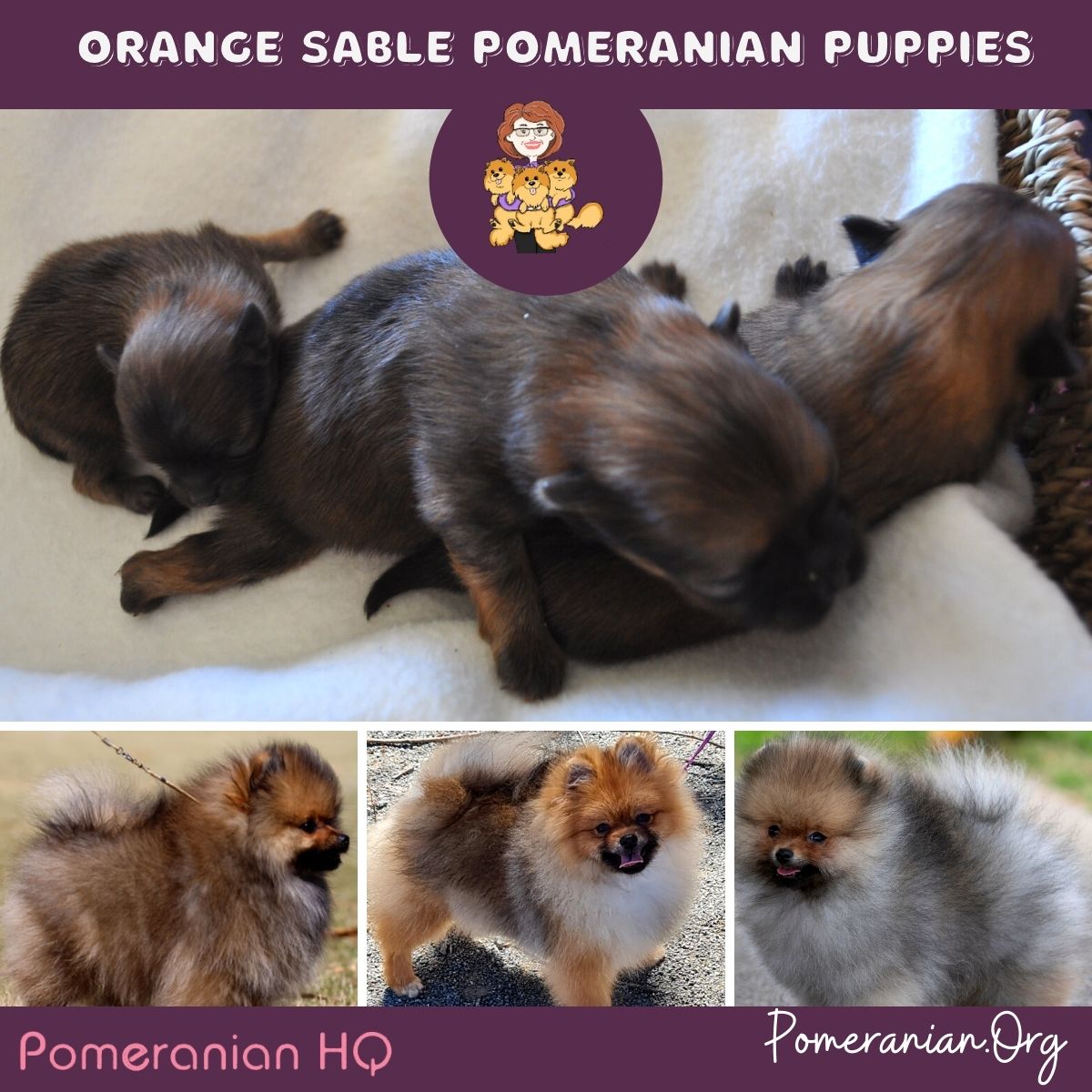
Sable Pomeranians: Genetics and Myths
There are at least 10 different genes that control color in the Sable Pomeranians. Different genes control different parts of the coat color. Some genes make the different color pigments while other genes control the distribution of these pigments within the individual hairs and all over the entire body.
Dogs have two kinds of pigment possible in their coats. The dark pigment is called “Eumelanin” and the light pigment is called “Phaeomelanin“. The Sable Pomeranian variations are created by these two pigments. Eumelanin gene has a default black color and codes for the black color spectrum. Phaeomelanin codes for the color spectrum in the Pomeranian’s coat.
A hair bulb in Sable Pomeranians can generate more than one type of melanin. It can also alternate production in such a way that some hairs are dark-tipped, followed by a lighter midpiece and an even lighter base.
There may be two shades of sable coat: one reddish and the other cream, on one shaft. Sometimes the phaeomelanin (a gene that produces the non-dark pigment) is concentrated in the tip, and the eumelanin (a gene that produces the black, blue, or liver) is in the base, though not often. The banding or alternating between dark and light sections results in a beautiful variety of sable colorations in Pomeranians
The definition of a sable pattern should refer to the Pom hairs being tipped with black. The more hairs and the longer that tipping, the darker the dog will appear.
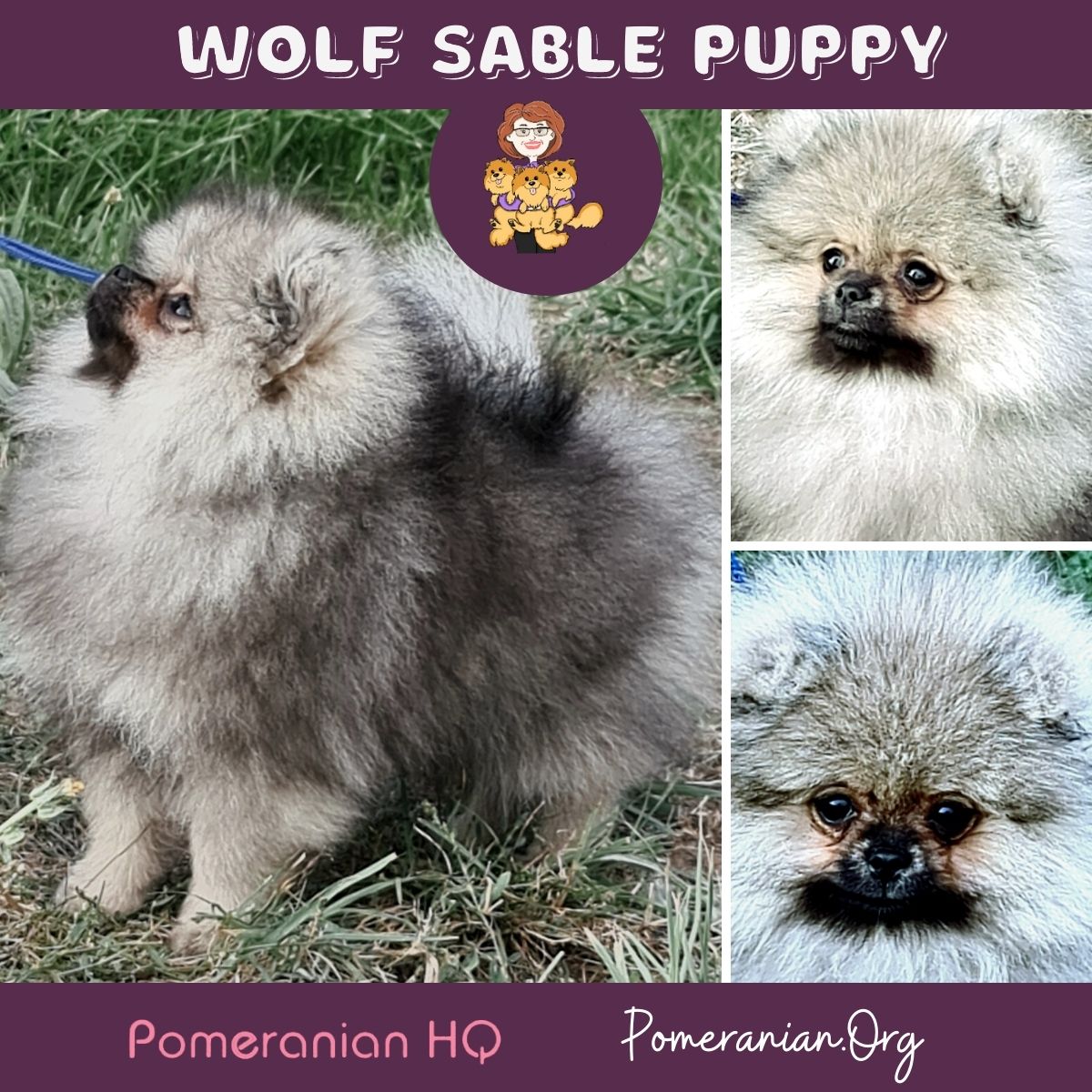
What Colors Do Sable Pomeranians Come In?
The term ‘sable’ is not exactly a color, but it refers more to a color pattern. Sable coloring is when individual hairs have distinct bands of color along their shaft.
The sable pattern usually combines with orange Pomeranian, red, cream Pomeranan, blue, and dark chocolate color genes.
- Orange Sable: When an orange Pomeranian has black tips, it will be classed as an orange sable Pom. This color is often described as bear-like. A beautifully rich and dreamy mix of orange and black tips, this Sable Pom has to be seen in real life to experience the richness of color in their fur.
- Cream Sable Pomeranian: Sable Pomeranians with the cream color shade will give a luxurious outlook. The cream color perfectly blends with the sable. Their undercoats are very light, and their topcoats have a silvery-tanned tinge to them. Cream Sable Poms are born a silvery color due to the black tipping on their light fur. It is unknown what genes are involved in making the coat color paler.
- Wolf Sable Pomeranian: The Wolf Sable Pomeranians have dark gray guard hairs that are black-tipped. Sometimes the hair tips look like silver giving them a wolf-like appearance. An authentic wolf sable Pomeranian like the Keeshond also has “spectacles” around their eyes. This makes them easy to spot when compared to other sable-coated dogs. Pictures just don’t do them justice.
- Red Sable: Red Sable Pomeranians will have a solid red base coat and black guard hairs. How dark these dogs appear will depend on how heavy their sabling is.
- Blue Sable: Blue Sables are the result of the dilute “d”gene. This dilute gene reduces the depth of the black pigment. The color of this Pom’s coat may be more coppery than orange with a bluish cast. They can sometimes look blue at birth.
- Chocolate Sable: Chocolate sables are beautiful and unique. Chocolate Sable Pomeranians have a light-medium brown undercoat and dark tipping with darker chocolate guard hair. The chocolate shade can stay the way it was at birth and might also become lighter and darker again. As newborns, they can often be mistaken for chocolate and tan. Chocolate sables are like their orange counterparts, but their genetic makeup contains two copies of the (bb) gene. The (bb) gene turns all black pigment to brown, changing what would have been black sabling and the points to brown.
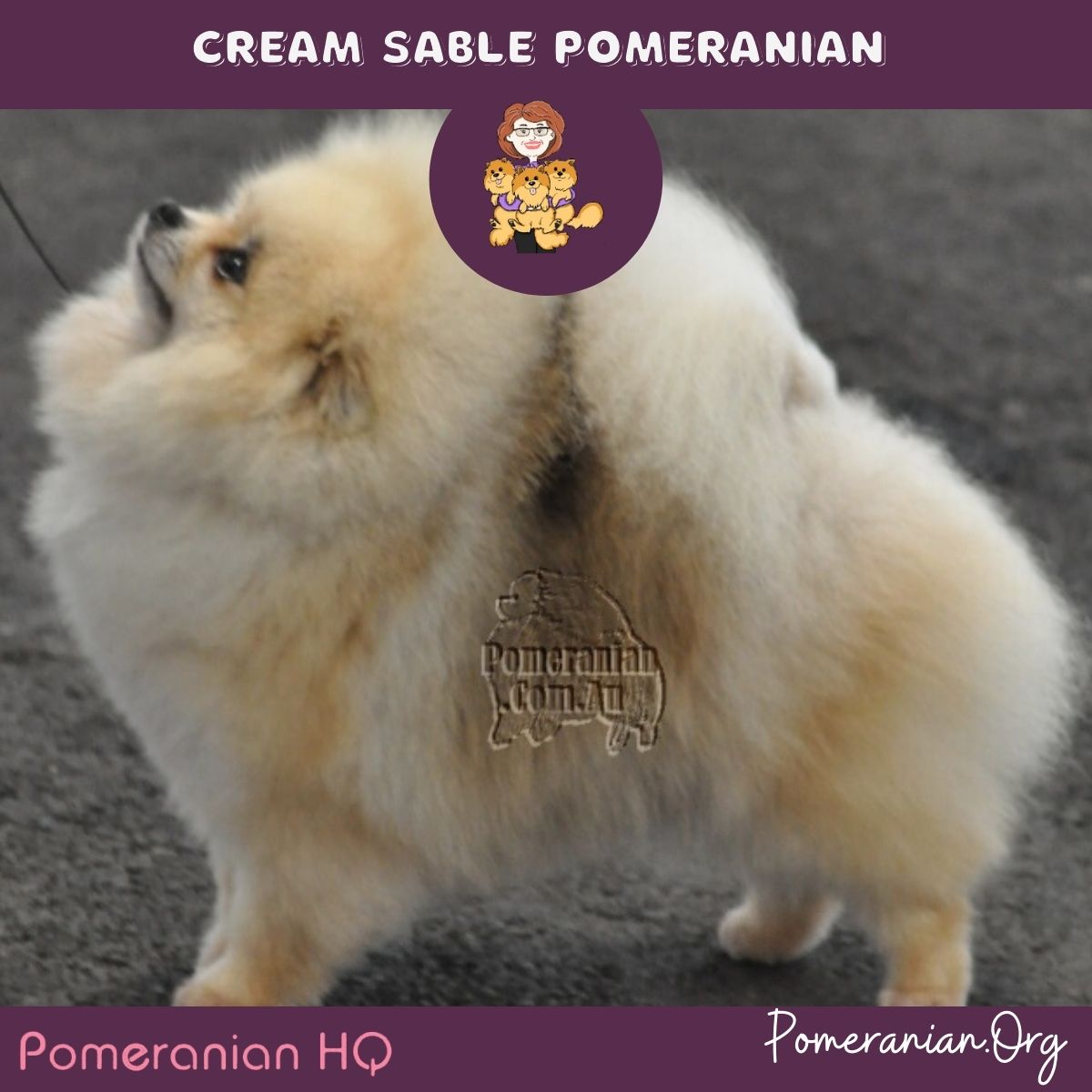
Do The Grooming Requirements Vary for Sable Pomeranians?
All Pomeranian colors bring the same grooming requirements and challenges. The grooming and brushing routine of a Sable Pom depends on the activity of the dog and the environment that they spend their time in.
Regarding shedding, all colors shed the same amount. However, sable Pomeranians’ shed hairs will show more on light-colored furniture and flooring. Let’s have a look at the grooming needs of sable Pomeranians:
- Sable Pomeranians require two to three times per week brushing to remove dead hair and prevent mats and tangles.
- They need a couple of baths in a month. Frequent bathing strips the coat of oils that keep it healthy.
- Brush your Sable Pomeranian teeth at least twice a week to prevent bacteria and tartar buildup.
- Trim your Sable Pomeranian’s nails once a month to avoid splitting and discomfort.
- Your Sable Pomeranians’ eyes should be clear with no redness, swelling, or discharge.
- When you groom your Sable Pomeranian, look inside his mouth and ears for signs of allergies or infection.
Are Sable Pomeranians Bigger?
No, Sable Poms are not bigger than other Pomeranians. Both males and females should weigh between 3 and 7 pounds and be 6 to 7 inches tall. Look at the size of the parents to get a better feel for how big your pup is likely to get.
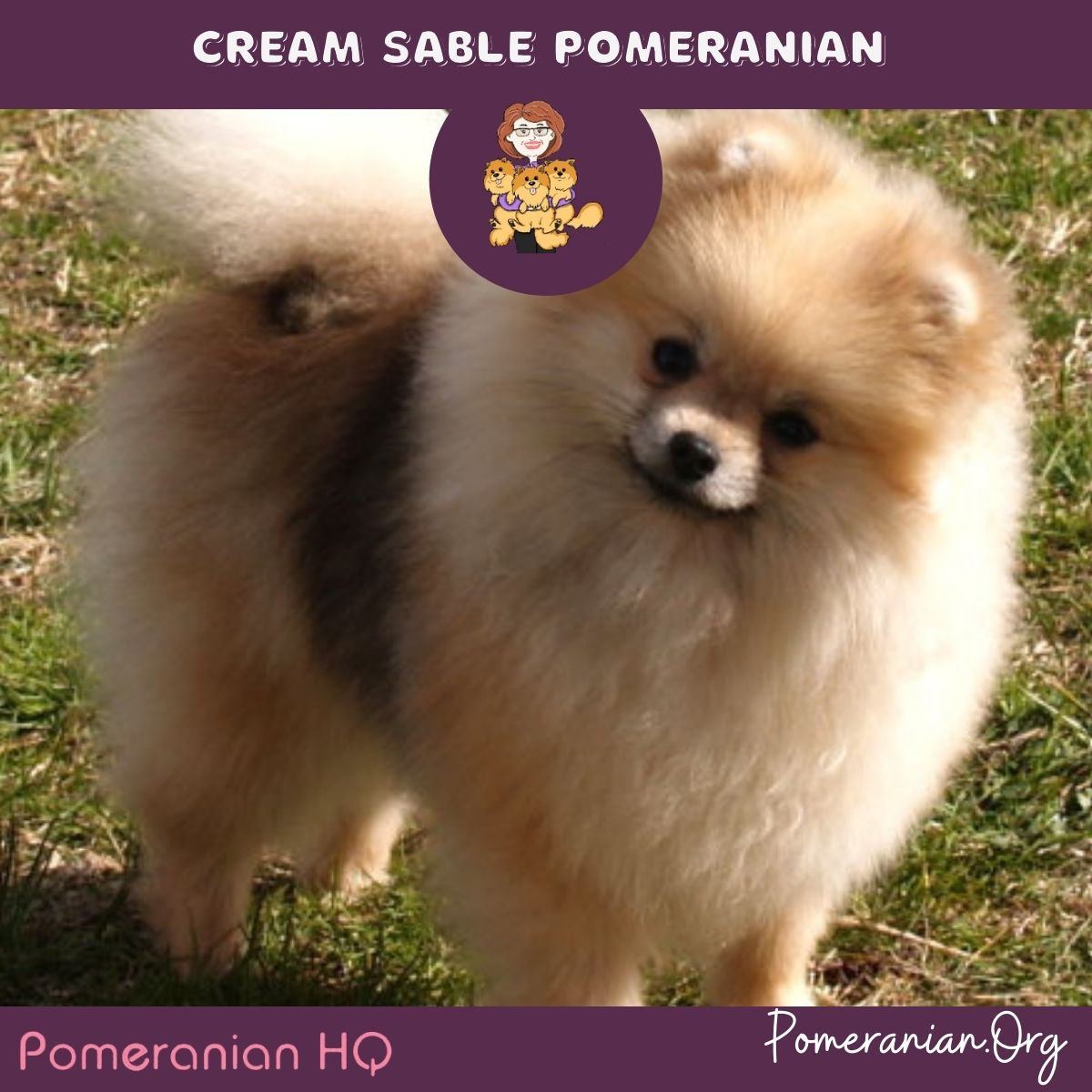
What Health Problems are Sable Poms Prone To?
As a pet parent, it is important to be conscious of your Sable Pom’s health at all times. Even the slightest health problem can be a serious risk for them. Regularly checking over your Sable Pom is an important step in catching problems early.
Just like other Pomeranians, Sable Pomeranians are prone to hereditary and non-hereditary health issues. Let’s have a look into these health issues that may affect this breed:
- Patella Luxation
- Tracheal Collapse
- Pharyngeal Gag Reflex
- Hypothyroidism
- Cushing’s Disease
- Heart Disease
- Idiopathic Epilepsy
- Dental problems
- Alopecia X
Responsible breeding techniques will greatly reduce the risks of genetic disorders in Sable Pomeranians. Buying from a responsible breeder will help ensure that you get a healthy Sable Pom.
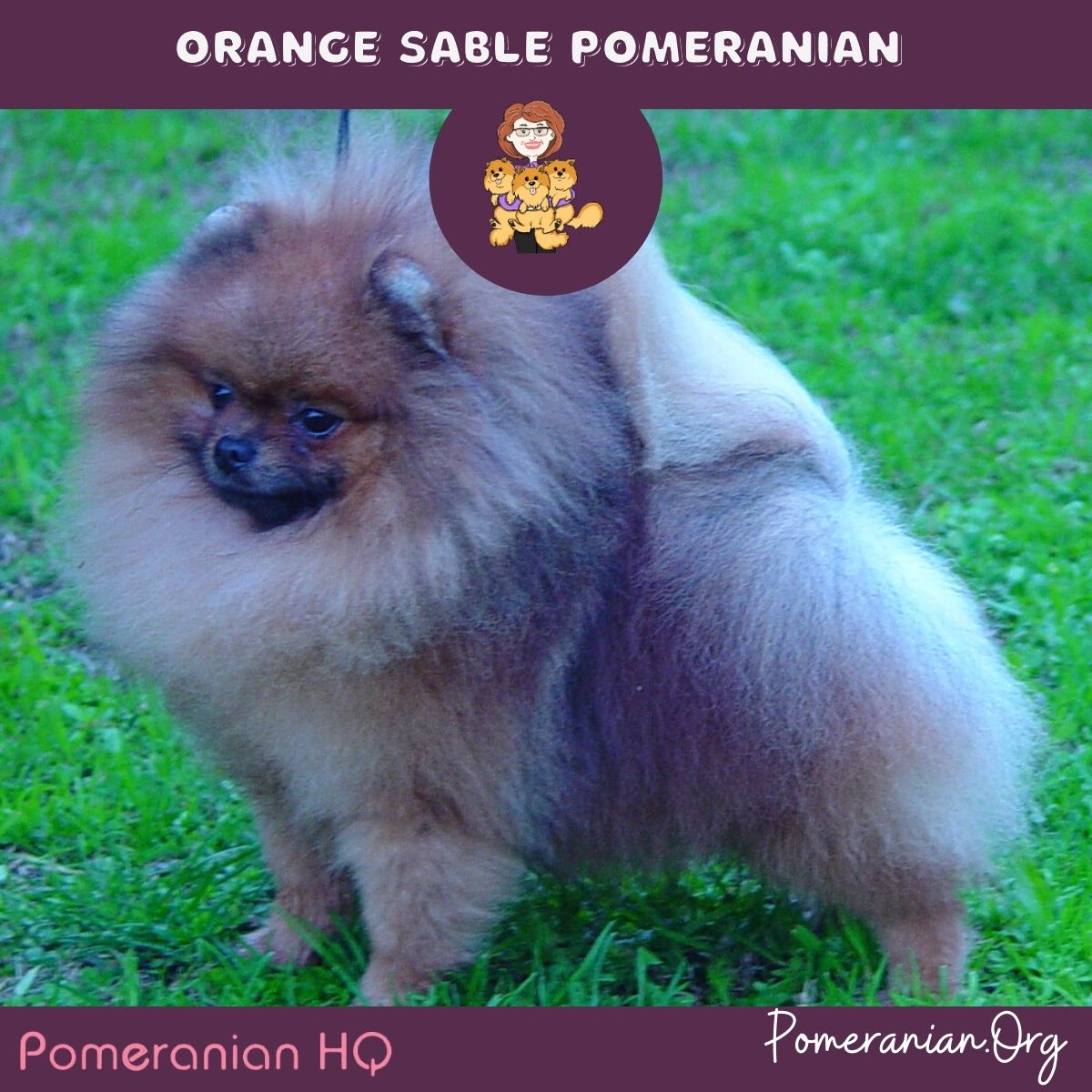
Pomeranian Colors
Pomeranian coats can be found in a wide array of colors, so each dog looks unique and distinctive. All colors, patterns, and variations there-of are allowed and must be judged on an equal basis. – AKC
Here’s a list of all the popular colors you might see in Pomeranians.
- Orange
- Cream
- Orange Sable
- Black and Tan
- Black
- White
- Wolf Sable Pomeranian
- Parti-color
- Chocolate
- Cream Sable
- Blue Merle
- Red
- Chocolate and Tan
- Red Sable
- Tri-colored
- Blue
- Blue Sable
- Blue and Tan
- Chocolate Merle
- Beaver
- Black and Brindle
- Chocolate Sable
- Lavender
- Brindle
- Merle
The nine recognized markings in Pomeranians are:
- White Markings
- Merle Markings
- Tan Markings
- Tri-Color Markings
- Brindle
- Sable
- Irish Marked
- Parti-Color
- Mask
Classifications – The Open Classes at specialty shows may be divided by color as follows: Open Red, Orange, Cream, and Sable; Open Black, Brown, and Blue; Open Any Other Color, Pattern, or Variation. – AKC
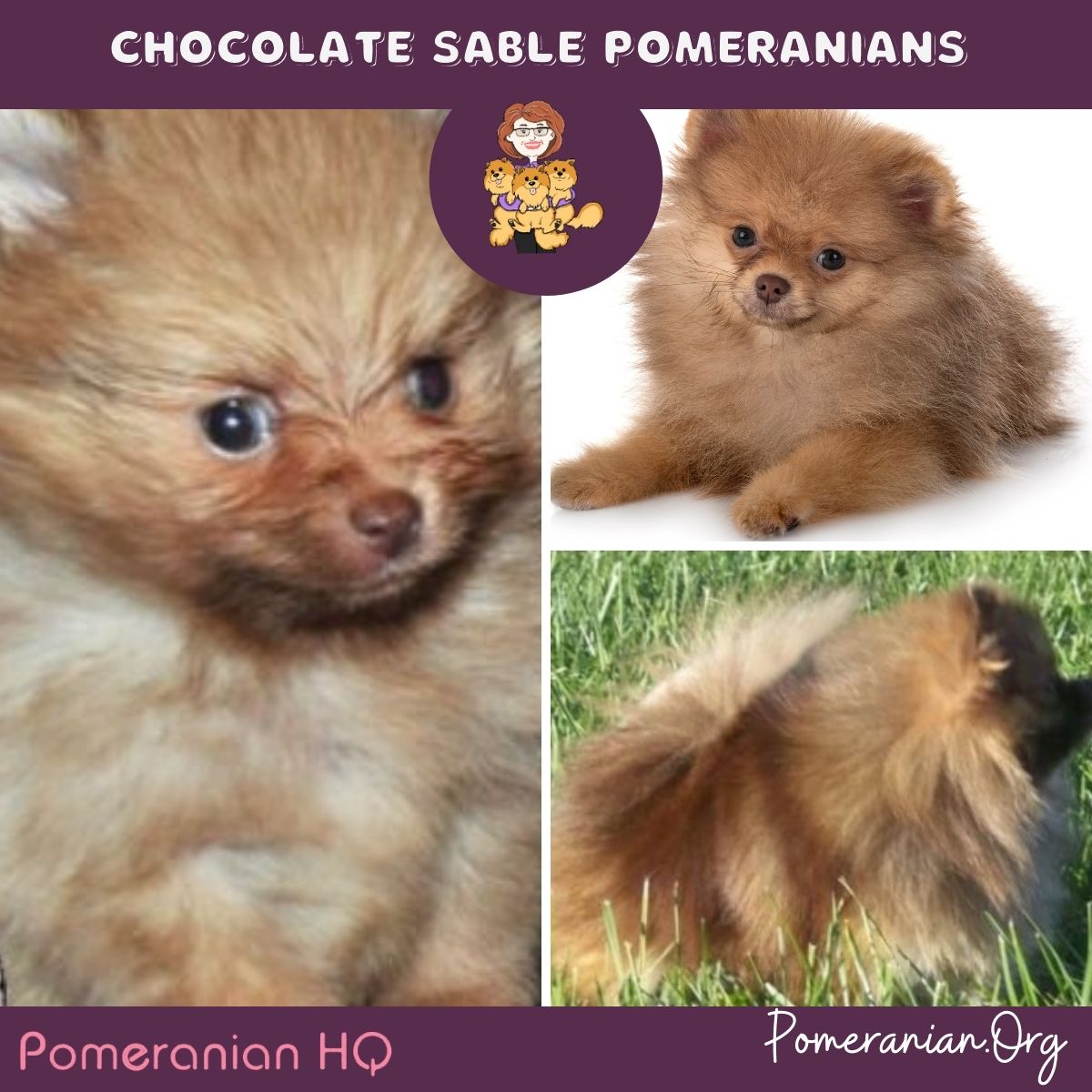
What is the Most Common Color of a Pomeranian?
The orange and orange sable is the most popular color among Pomeranians and are also the most common to see. Colors like black, white, brown, and gray ( wolf sable) are also common.
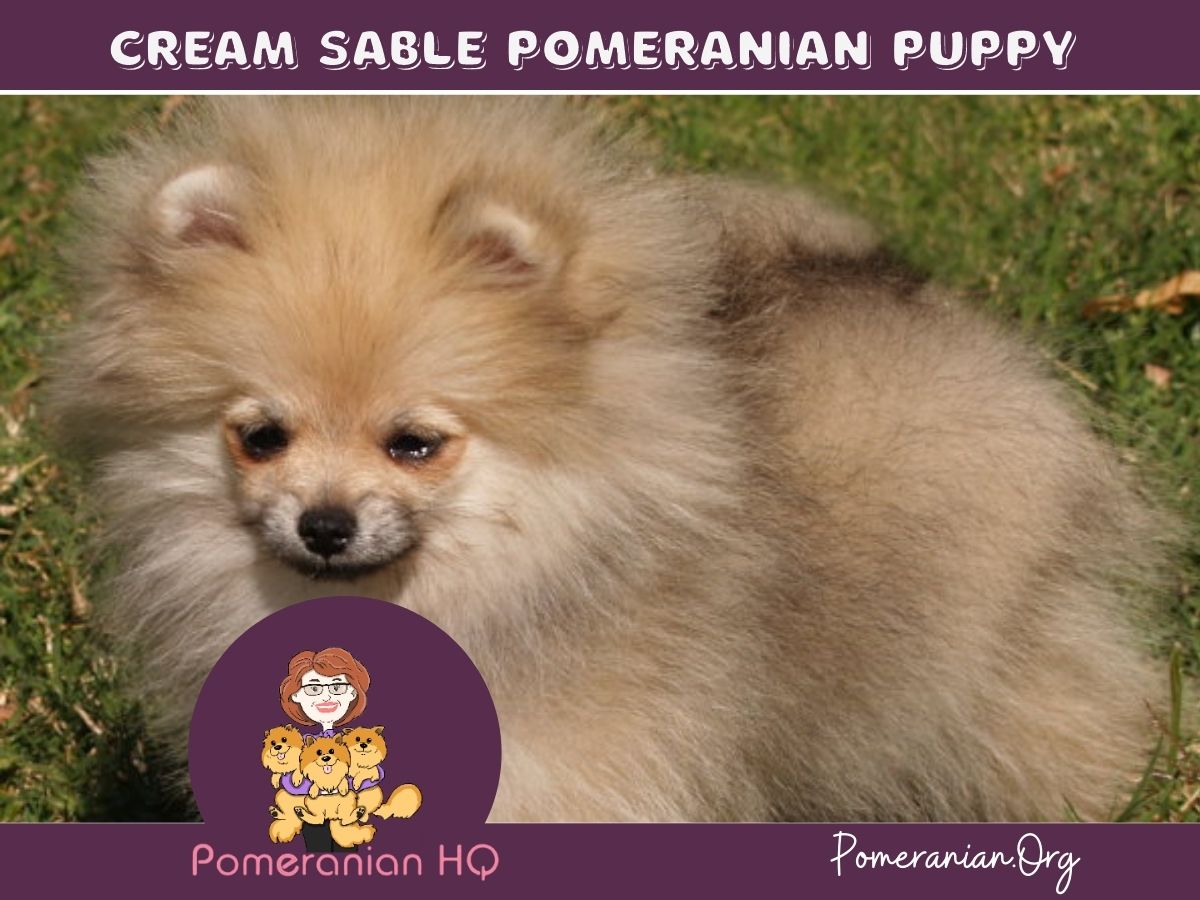
Tips to Keep Your Sable Pomeranian Healthy
There are a lot of steps that you can take to help keep your Sable Pomeranian healthy.
- Choose your Sable Pom’s food wisely. Keep away from artificial flavors, and chemical additives to prevent allergies and gastrointestinal distress.
- Exercise your Sable Pomeranian each day. Take your Sable Pom for outdoor walks for a minimum of 20 minutes daily.
- Dog proof your house no matter what age your Sable Pomeranian is. Remove all dangerous items that are poisonous or can cause choking hazards. Wrap wires with cord concealer.
- Keep up with the veterinary appointments. If you miss one, reschedule it right away. Sable Pomeranians should have 1 yearly checkup.
- Make sure that your Sable Pom receives all needed vaccinations and boosters.
- Never leave your Sable Pomeranian alone in the car. While traveling always place your Sable Pomeranian into a safe car seat or secured dog crate.
- Be ready for seasonal changes to provide tailored care for Sable Pomeranians. Adjust your efforts both during the summer and in the wintertime.
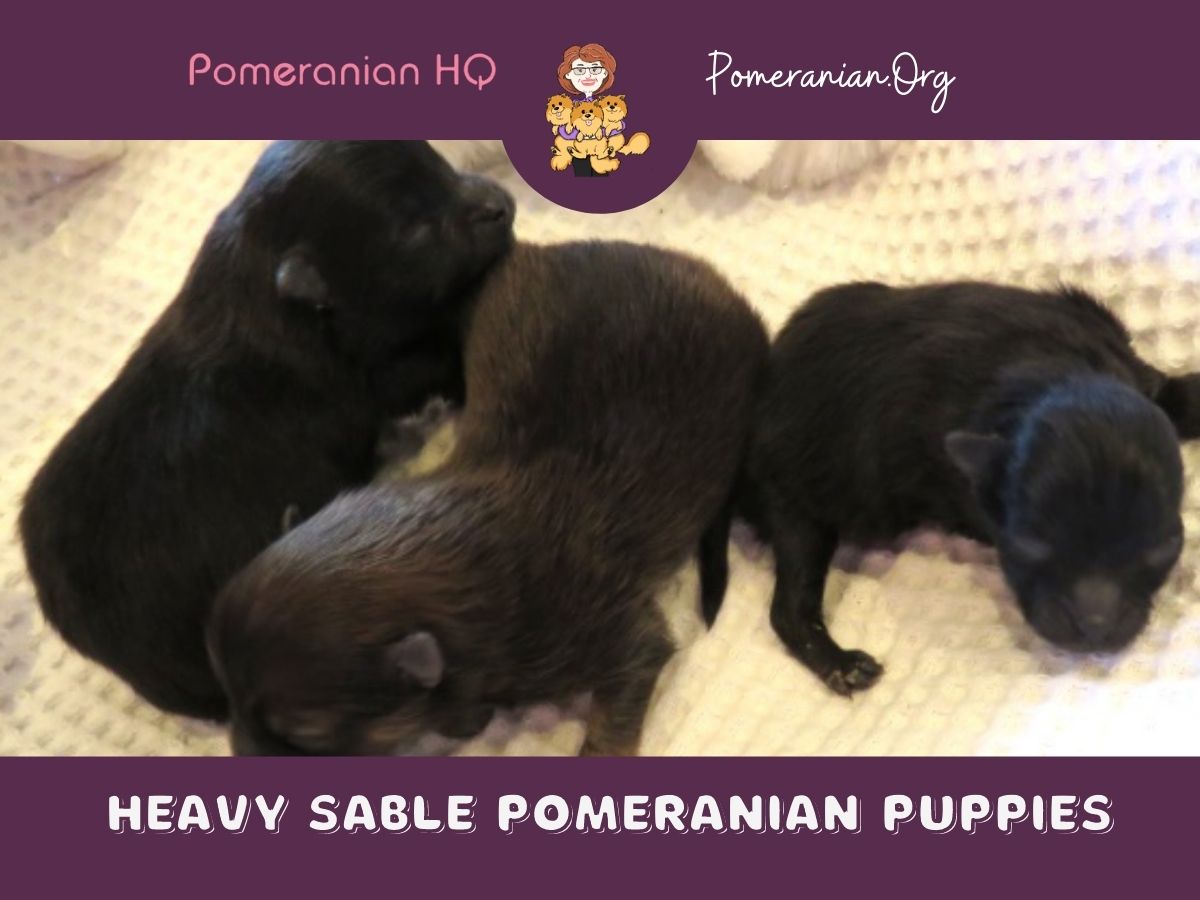
30 Sensational Sable Pomeranian Names
Do you have a sweet Sable Pom that needs a good name? Looking for something more specific?
To help you out, I have compiled some classic Sable Pomeranian names so you can pick a name that’s just the right fit for your Sable Pom puppy.
Check out some of our favorite Sable Pomeranian name ideas below!
- Butterscotch
- Tanner
- Copper
- Brownie
- Cocoa
- Latte
- Toffee
- Ember
- Blaze
- Oakley
- Bambi
- Honey
- Moose
- Nutmeg
- Bourbon
- Cider
- Bear
- Pine
- Spruce
- Woody
- Forrest
- Fawn
- Nugget
- Penny
- Ginger
- Whiskey
- Cider
- Hershey
- Foxy
- Cinnamon
Your Sable Pomeranian’s name is the key to proper communication between you two. Let your imagination flow and pick a name the whole family will love.
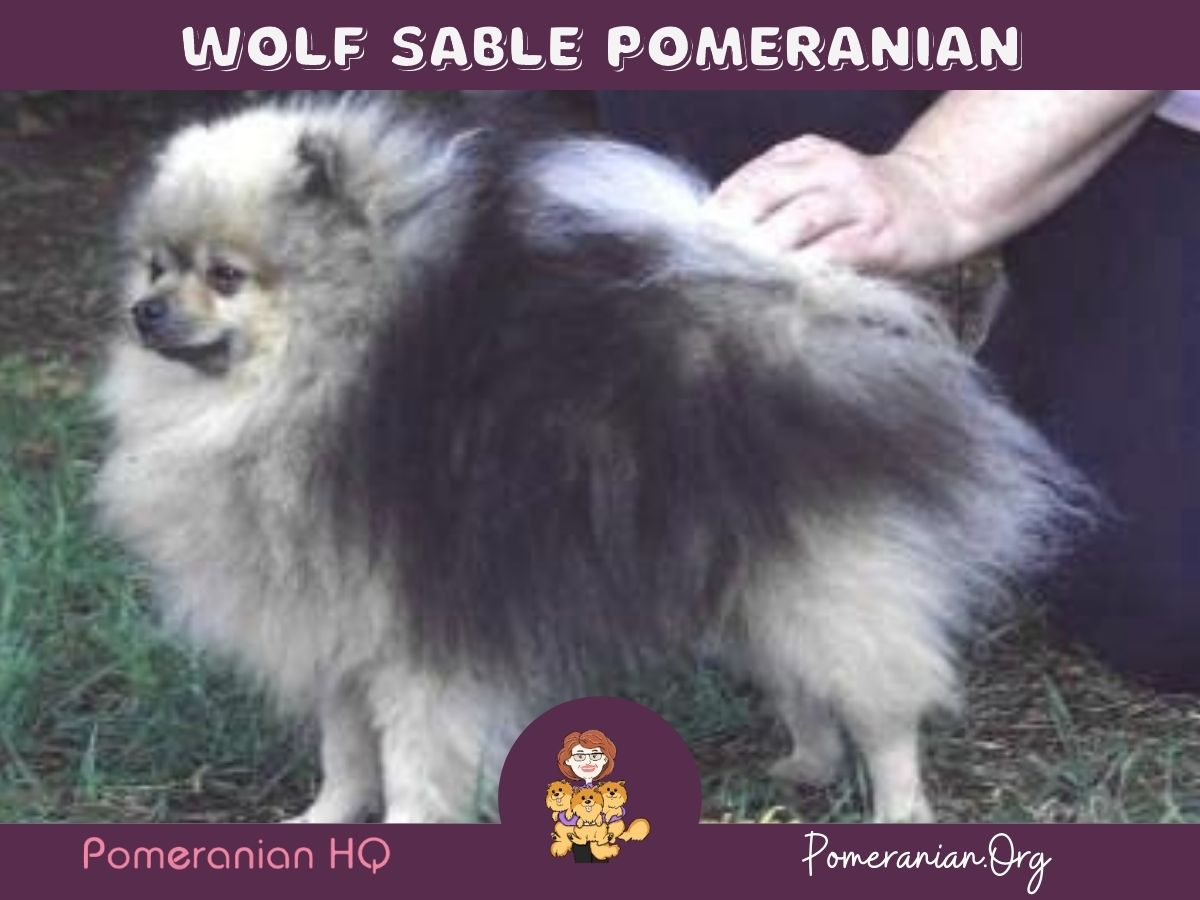
Final thoughts on Sable Pomeranians
Overall, sable Pomeranians are no different than other Poms as far as personality, temperament, exercise, and grooming needs are concerned.
All sable Pomeranians are bold, lively, affectionate, and loyal fans. With the right training and socialization, they make incredible family companions.
You can find Pomeranians in many different colors. As every Sable Pomeranian is different, with the color and pattern both varying, it makes for an eye-catching and amazing pet.
While you should pick the coloring you like the most, make sure to not just choose your pet on his looks. Before buying a puppy for his color, make sure that the breeder selects for health first, breed type second, and color third!
Do you have a Sable Pomeranian at home? Drop a comment and let me know about your Sable sweetheart!
Copyright Pomeranian.org. All Rights Reserved.
References and Further Reading:
[1] Official Standard of the Pomeranian (AKC). American Kennel Club, 2011.
[2] English Kennel Club Pomeranian Breed Standard, 2017.
[3] Denise Leo, The Pomeranian Handbook.
[4] Milo G. Denlinger “The Complete Pomeranian.”
[5] Kimbering Pomeranians “1891-1991”.
[6] William Taplin’s “The Sportsman’s Cabinet.”
[7] E. Parker “The Popular Pomeranian.”
[8] Lilla Ives “Show Pomeranians.”


